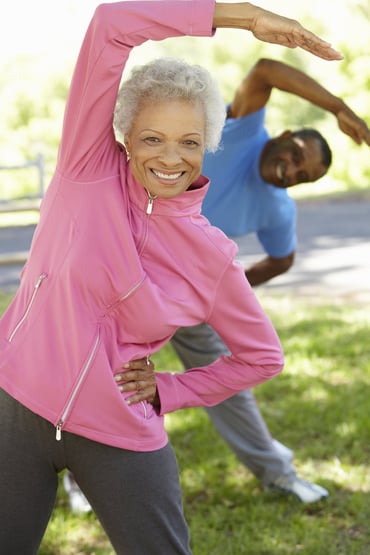 At some point or another, we all fall victim to the "more is better" mentality, even when it comes to exercise. For those of us who exercise regularly, learning how to pull back can be a useful skill.
At some point or another, we all fall victim to the "more is better" mentality, even when it comes to exercise. For those of us who exercise regularly, learning how to pull back can be a useful skill.
So, how often should we recover from exercise? How should we recover? Is there a wrong way to recover? The short answer is, everyone is different, but everyone needs ample recovery time. From Olympian athletes to the most novice of gym-goers, proper recovery after exercise is necessary in order to make progress.
So, let's break it down. There are two kinds of recovery from exercise: Active Recovery and Passive Recovery. Both have their place in our lives while having different uses and benefits.
What is Active Recovery?
Active recovery uses non-strenuous physical activity to keep the body moving.
When is this appropriate to being this type of upturn? Active recovery is suitable starting the day after strenuous physical activity and when experiencing mild-to-moderate muscle soreness.
Activities for this type of recovery may include walking, swimming, yoga, light stationary biking, foam rolling, stretching and other low-intensity exercises. Remember, do not strain yourself.
Benefits of active recovery includes improvement on flexibility and mobility, along with blood circulation, reduction of muscle soreness, risk of injury and elimination of toxins.
What is Passive Recovery?
As you may have guessed, passive recovery uses rest to give the body a break to heal, with little-to-no physical exertion.
This type of recovery is best when you’re recovering from an illness or injury, need a "mental break" from exercise, and if you experience moderate-to-severe muscle soreness lasting longer than 72 hours.
To enjoy passive recovery, activities include a leisurely walk, mediation, plenty of rest/sleep. You can even treat yourself to a massage and a soak in a hot tub or sauna to help your muscles recover. This rest period is known to reduce fatigue and improve exercise program adherence.
To know which type of recovery is best for your health, it is important to listen to your doctor’s recommendations and your body. You know your body best; if something doesn’t feel right, don’t push yourself. Everyone recovers at different paces.
To learn more about how Moorings Park Communities can help you your vitality and wellness, please contact 239-643-9111.



